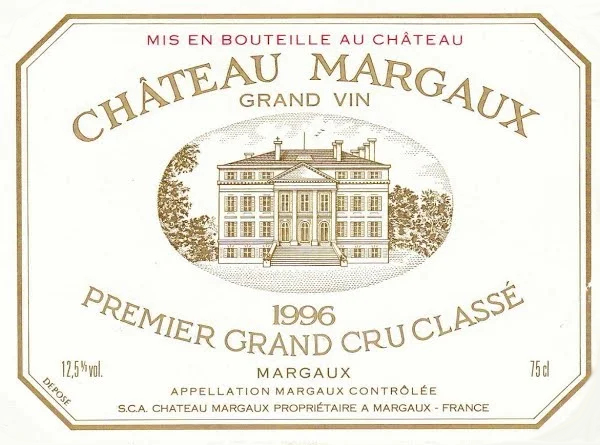Château Margaux 1991
Review of the Estate
Château Margaux is known for producing some of the silkiest, most aromatic wines in Bordeaux and it has been famous for doing so for centuries. The origins of the estate may be traced back to the 15th century when the Lestonnac family took over a grain growing property known as Lamothe (deriving from la motte - meaning a small rise in the land, or hill). The agricultural change from cereal crops to vines was led by Pierre de Lestonnac from 1572 to 1582. Further developments occurred when, over a century later, Chateau Margaux estate manager, Monsieur Berlon, saw the benefits of vinifying red and white grapes separately. This change was what set Chateau Margaux firmly on the path to modern vinification practices and international renown.
This reputation spread over the next several hundred years. Sir Robert Walpole, the English Prime Minister in the early 18th Century, declared himself an avid supporter of Chateau Margaux and was known to purchase four casks every three months! When the Marquis de la Colonilla purchased the estate in the early 19th century, the outstanding reputation of Chateua Margaux's wines demanded an impressive chateau to match. Built in 1810 by Louis Combes, the current chateau is a unique example of the neo-classical style. With its structured facade, balanced by ionic columns, it exudes a refined elegance not dissimilar to that of the wines produced within. Chateau Margaux was officially recognised as an historic monument in 1946.
Today Chateau Margaux is owned by Corinne Mentzelopoulos. Her father, Andrè, purchased the estate in 1977 and invested significantly in the regeneration of the vineyard and winery by installing new drainage systems, replanting vines, creating a new underground cellar and investing in new oak barrels. The result of these improvements is evident in the spectacular and consistent vintages produced by Chateau Margaux since the 1978 vintage. This has allowed Chateau Margaux to remain a dominant force in a highly competitive market and maintain its preeminent global reputation.

Vineyard
Surface area: 192.7 acres
Grape Varieties: 75% Cabernet Sauvignon, 20% Merlot, 5% Cabernet Franc and Petit Verdot
Average age of vines: 35 years
Density of plantation: 10,00 vines per hectare
Average yields: 45 hectoliters per hectare
Average cases produced: 16,500 per year
Plateau of maturity: 9 - 35 years
Château Margaux 1991 Reviews / Tasting Notes
Neal Martin - The Wine Advocate
Point Score: 88
Tasted blind as a vintage comparison at the Valandraud vertical, the 1991 Chateau Margaux was actually much better than I expected and certainly surpassed my solitary previous encounter. It is quite deep and clear in color with a surprisingly generous bouquet that is not complex, but attractive with scents of mulberry, mint and star anise. It opens nicely in the glass. The palate is medium-bodied with slightly rustic, irony tannin, though the fruit profile is charming: blackberry, chestnut, spice box, cumin and a touch of undergrowth. Of course, after 25 years it is firmly into its secondary phase and yet it has retained admirable cohesion and freshness. Nobody is going to bat an eyelid if you drink this now and might wonder why you never did in the 1990s. But given the substance and unexpected lack of greenness, a bottle of sound provenance will continue to hold in there. Tasted December 2016.
Wine Spectator
Point Score: 85
A little disappointing, but a pretty wine to smell and taste. Impressive fruit and wood accented by silky tannins, but slightly dry and herbaceous on the finish. James Suckling,Wine Spectator 1994